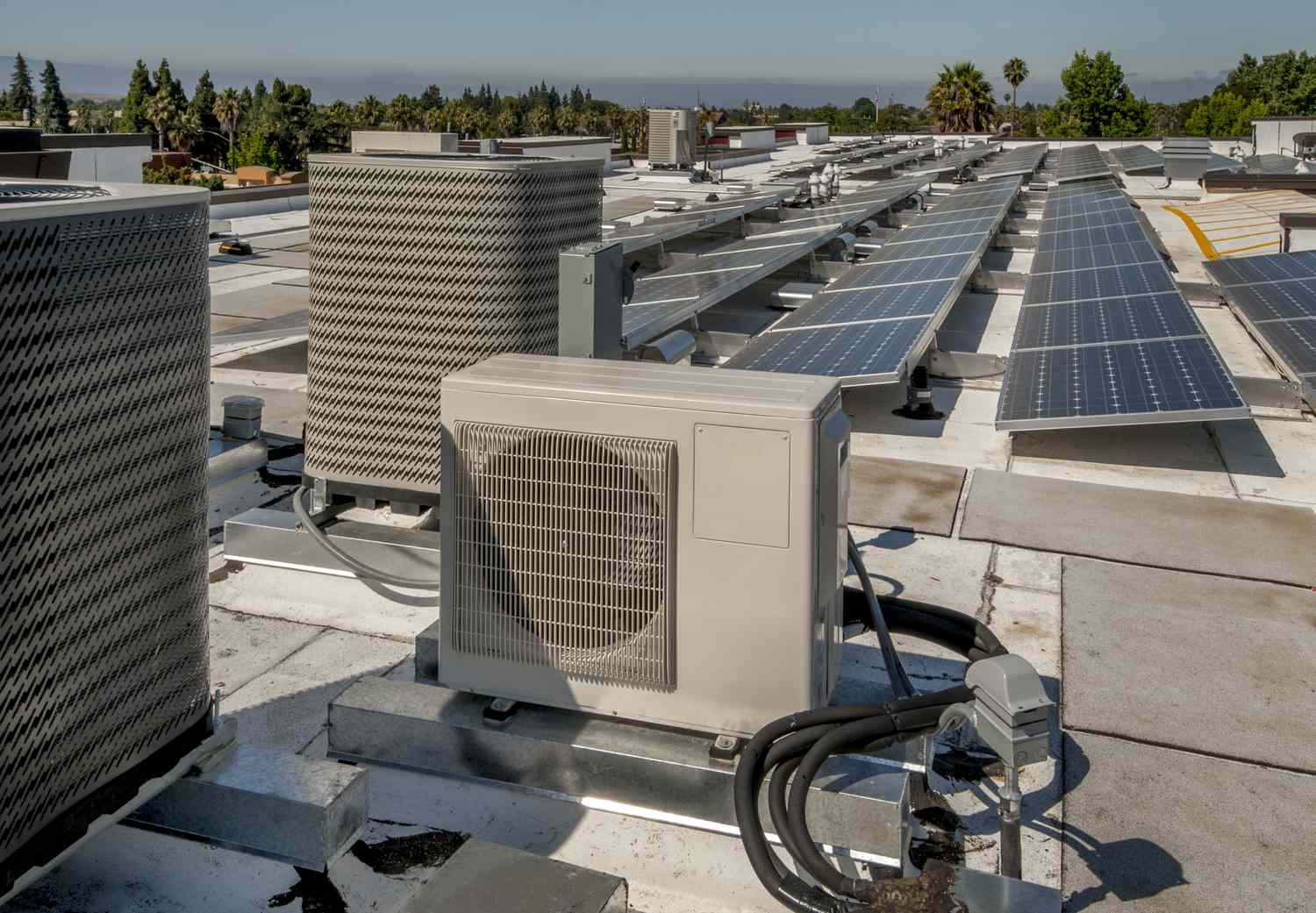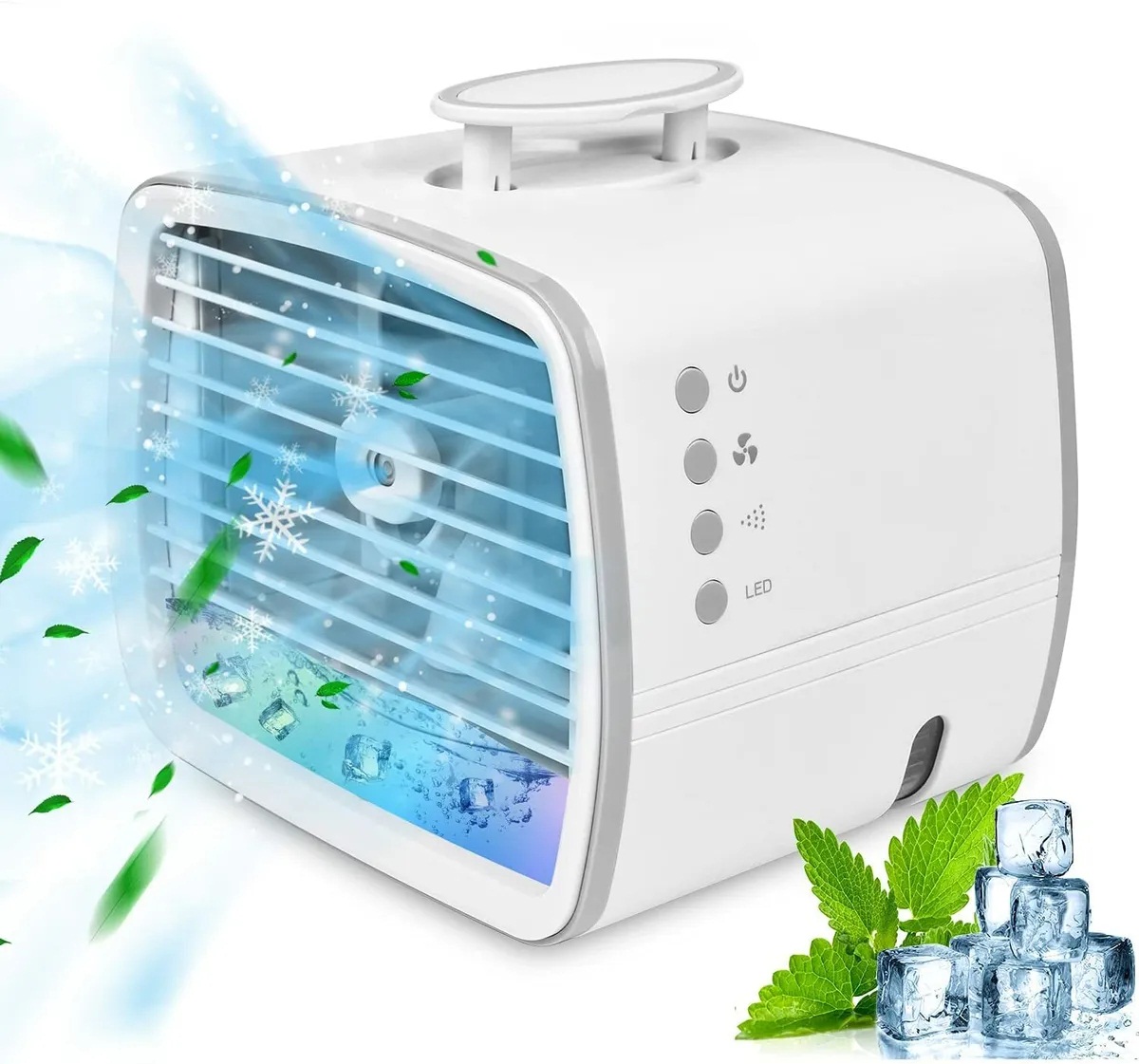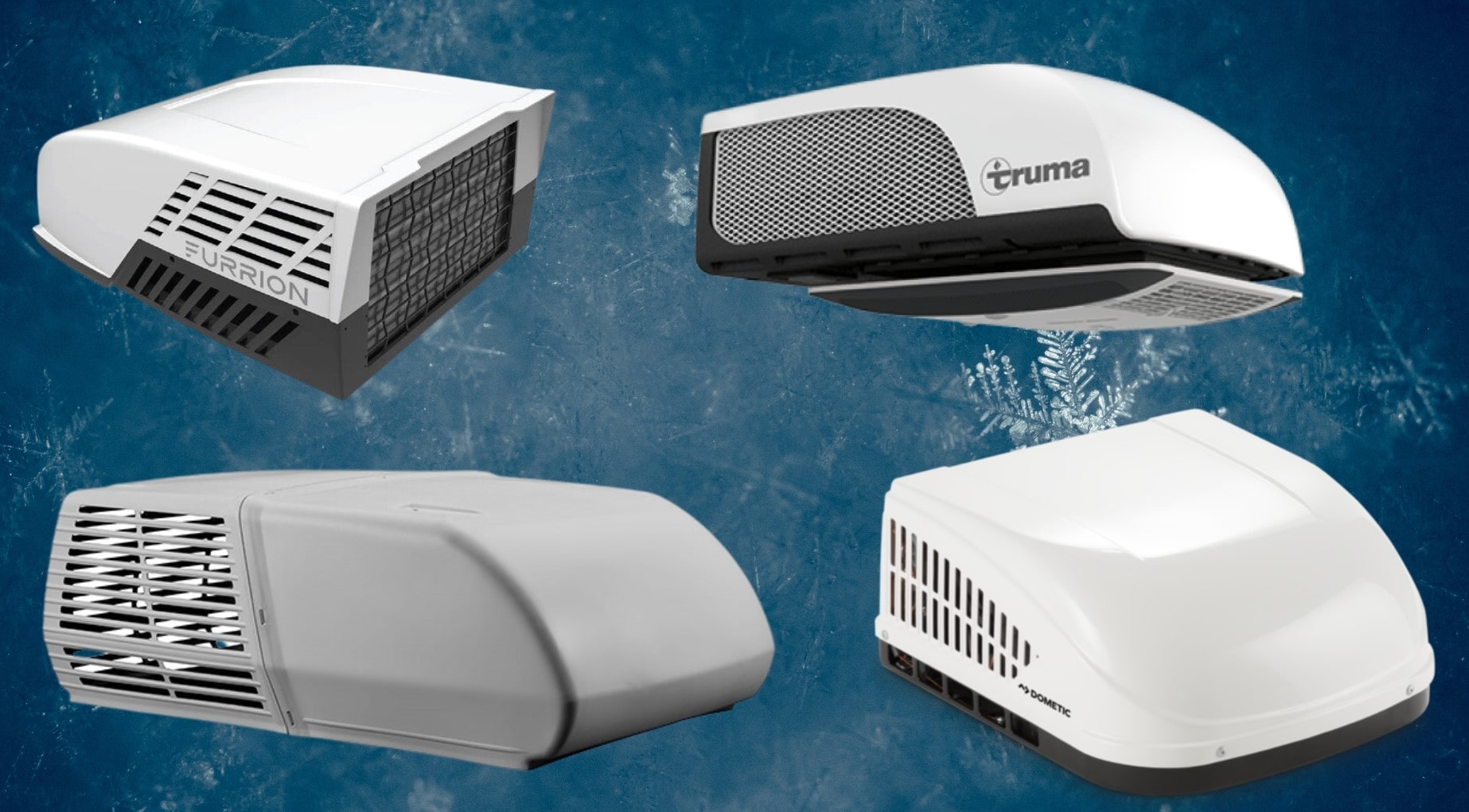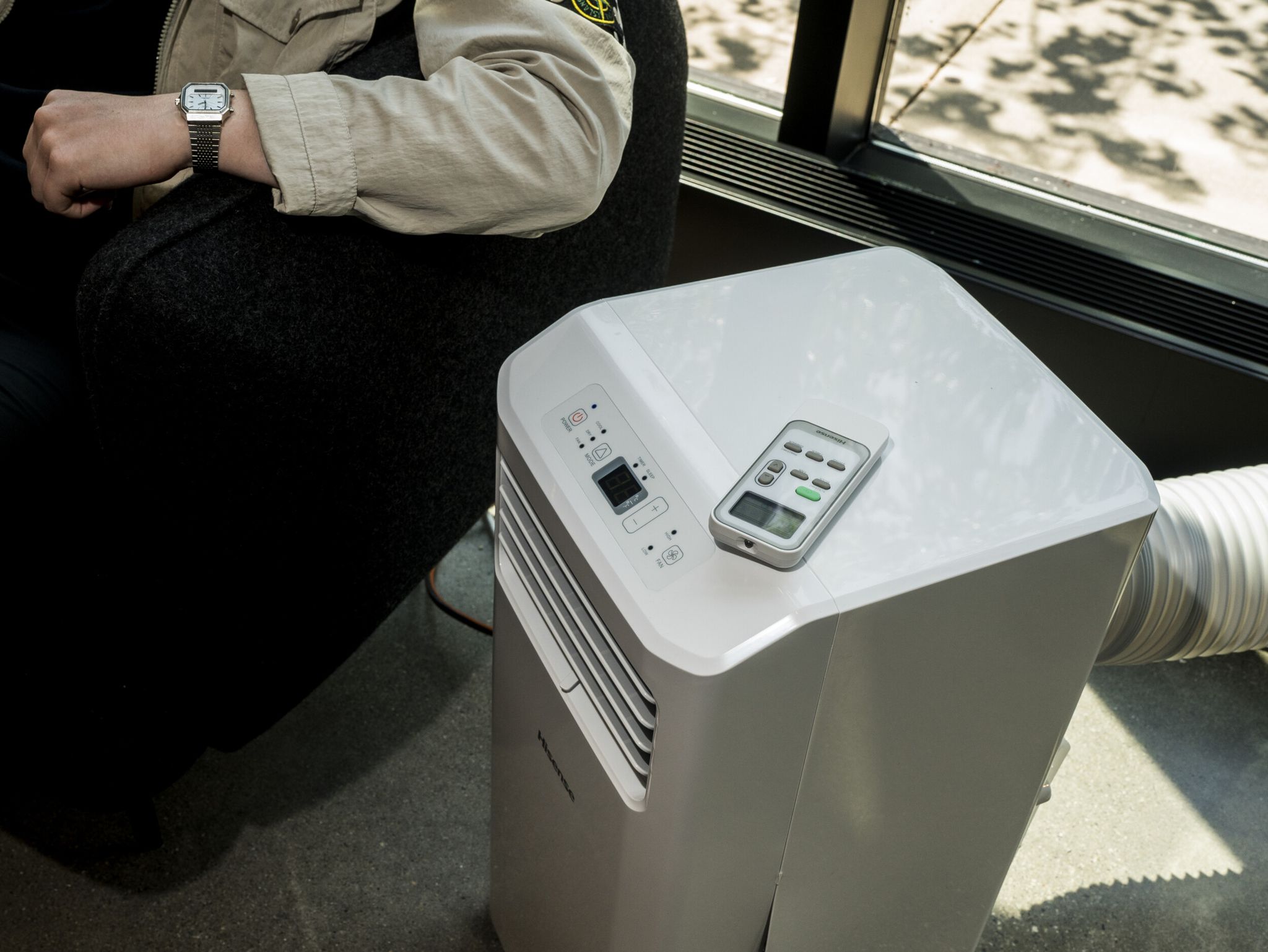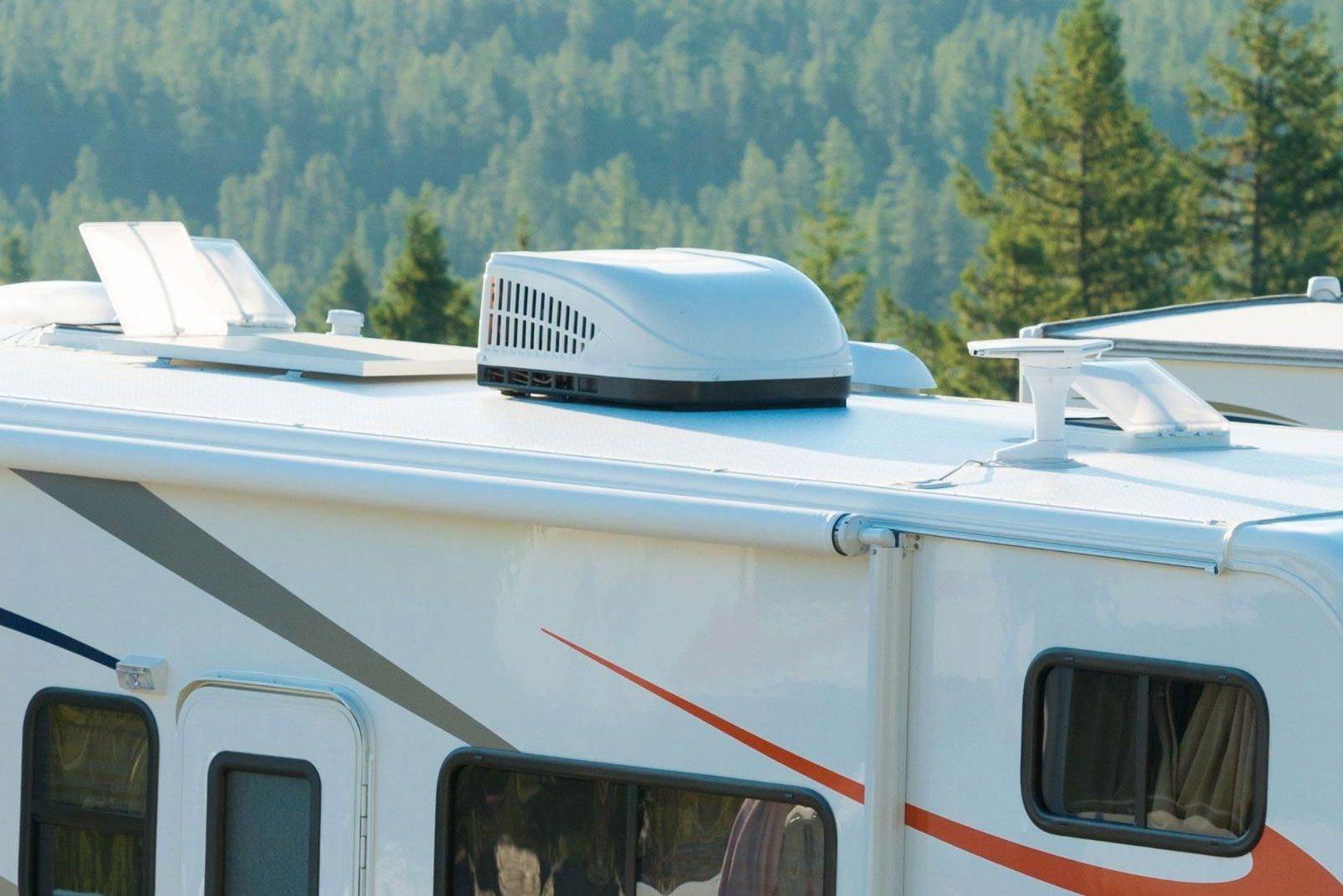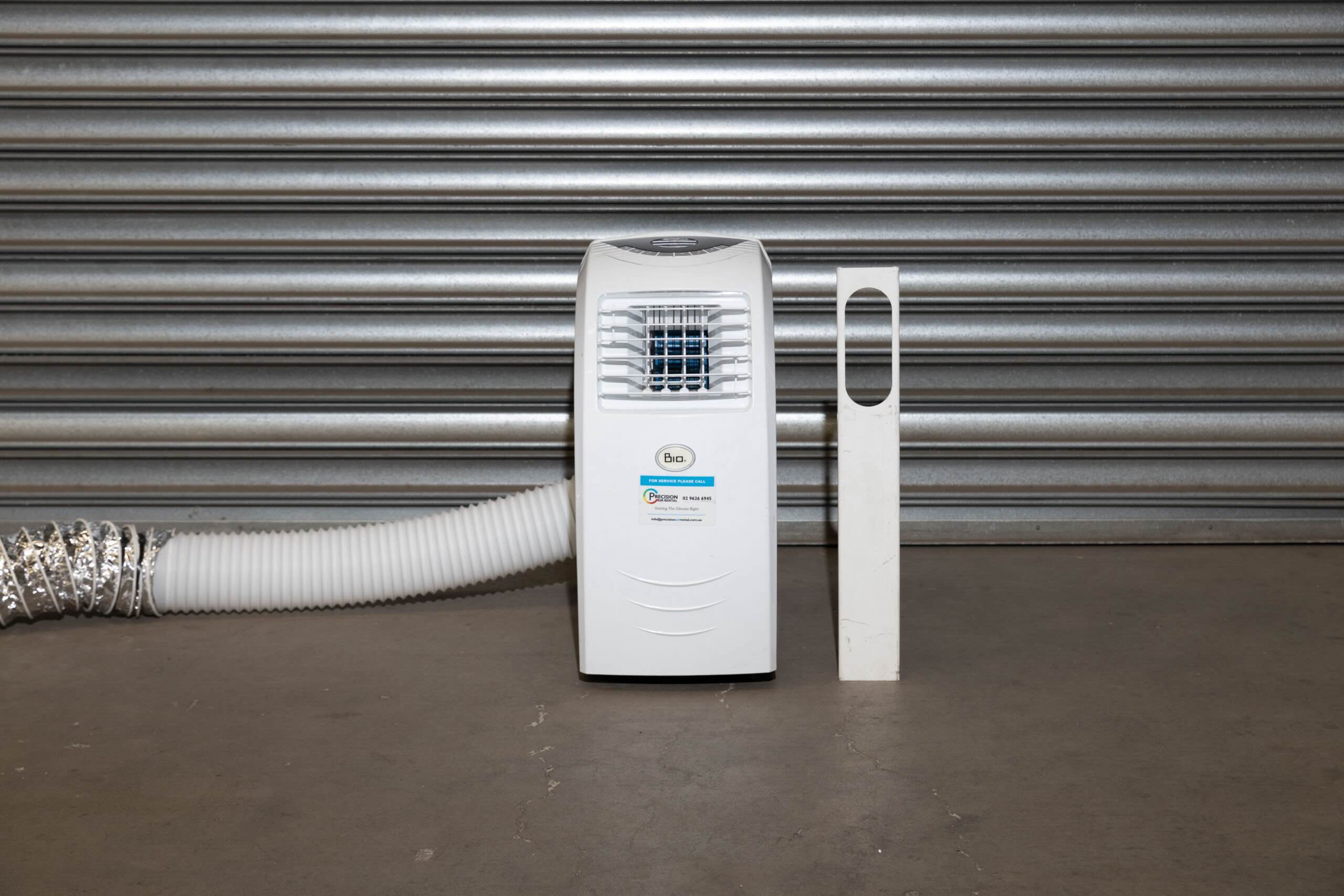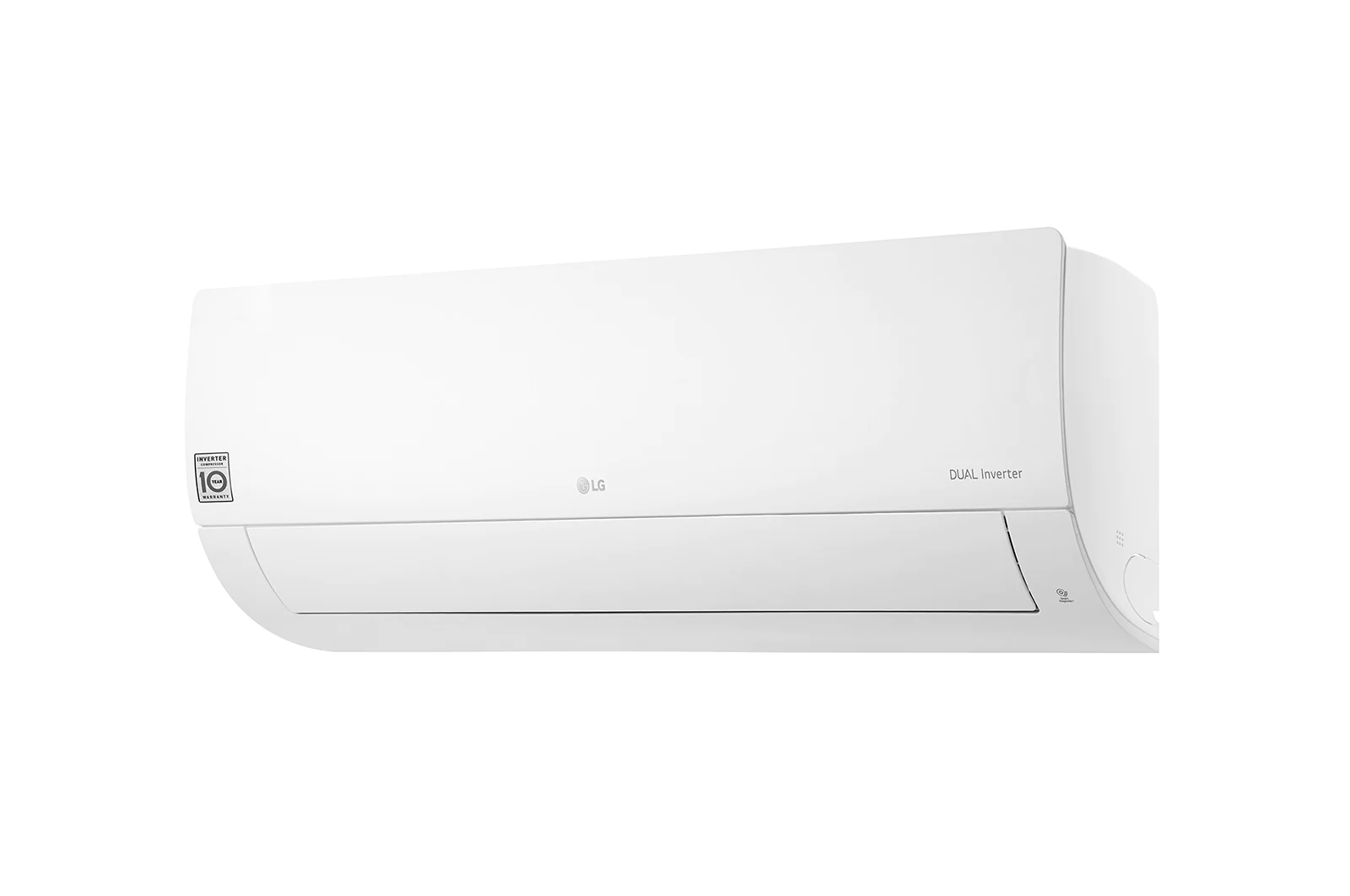Home>Home Maintenance>How Many Degrees Can An Air Conditioner Cool
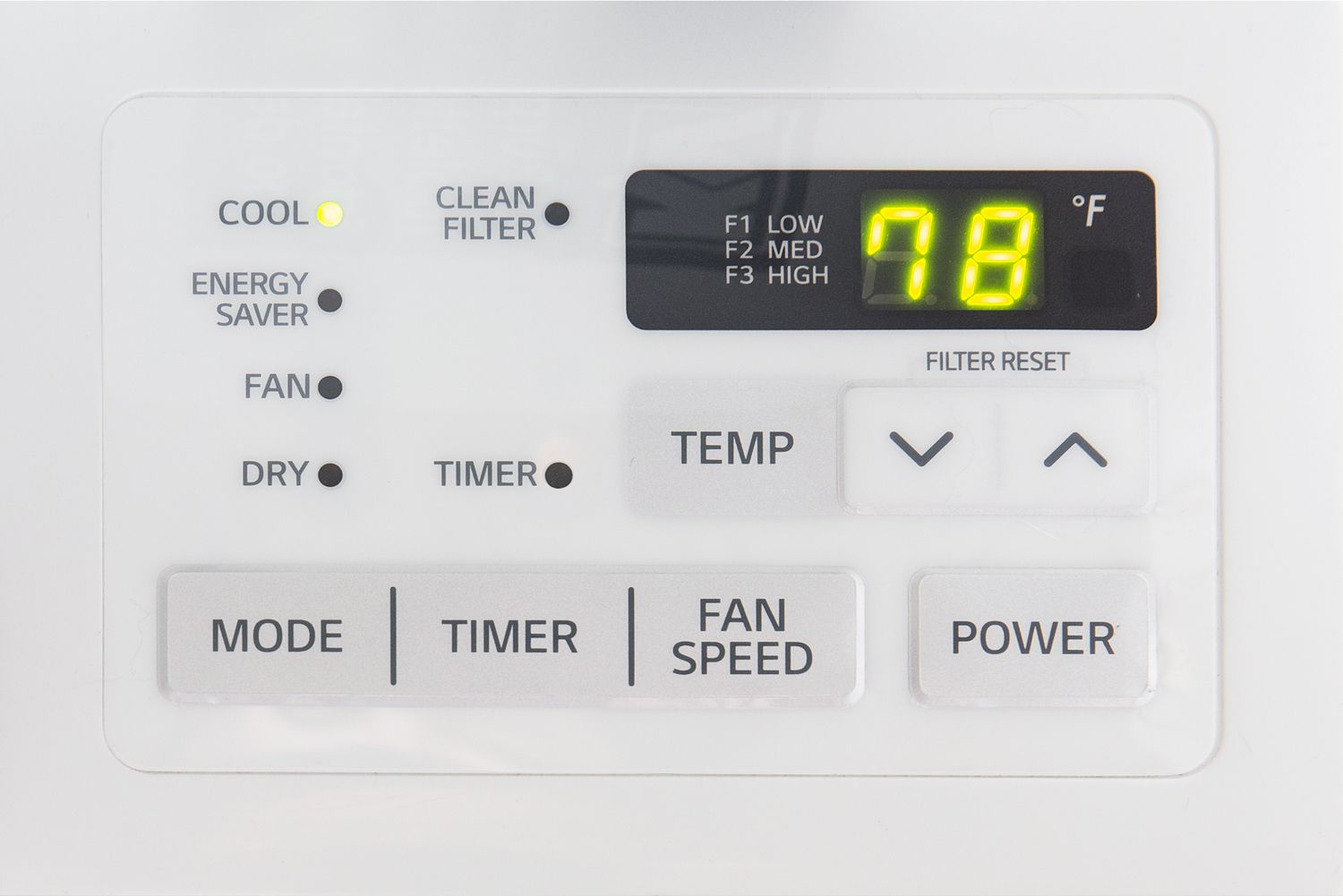

Home Maintenance
How Many Degrees Can An Air Conditioner Cool
Modified: August 28, 2024
Learn about the cooling capabilities of air conditioners for home maintenance. Discover how many degrees your AC can effectively cool to keep your living space comfortable.
(Many of the links in this article redirect to a specific reviewed product. Your purchase of these products through affiliate links helps to generate commission for Storables.com, at no extra cost. Learn more)
Introduction
When it comes to keeping our homes comfortable during the scorching summer months, air conditioners are an absolute lifesaver. These cooling systems are designed to regulate the temperature and humidity levels indoors, creating a haven of coolness amidst the sweltering heat outside. But have you ever wondered just how many degrees an air conditioner can cool?
In this article, we will delve into the world of air conditioners and explore the cooling capacity of these incredible machines. We will dive into the factors that influence their cooling capability and discuss the limitations they might have in effectively cooling your home. Additionally, we will provide you with some valuable tips to optimize the cooling efficiency of your air conditioner, helping you get the most out of it.
So, get ready to beat the heat and learn all there is to know about the cooling power of air conditioners.
Key Takeaways:
- Air conditioners can only cool a certain amount based on their BTU capacity and the outdoor temperature. Understanding these limits helps manage expectations and optimize cooling efficiency for a comfortable home.
- Factors like room size, insulation, and climate impact an air conditioner’s performance. By considering these factors and following energy-saving tips, you can enjoy efficient cooling and lower energy bills.
Read more: Why Is My Air Conditioner Fan Not Working
Understanding Air Conditioners
Before we delve into the cooling capacity of air conditioners, it’s important to have a basic understanding of how these appliances work. Air conditioners employ a refrigeration cycle to extract heat from indoor air and expel it to the outdoors, thus creating a cooler indoor environment.
The key components of an air conditioner include the compressor, condenser, expansion valve, and evaporator. The compressor compresses the refrigerant gas, increasing its temperature and pressure. The high-pressure gas then flows into the condenser, where it releases heat to the surroundings and condenses into a high-pressure liquid.
Next, the liquid refrigerant passes through the expansion valve, which reduces its pressure and temperature. As it enters the evaporator coil, the refrigerant evaporates, absorbing heat from the indoor air and cooling it down. The cooled air is then directed back into the room, while the heated refrigerant is routed back to the compressor to repeat the cycle.
It’s important to note that air conditioners not only cool the air but also dehumidify it. As the warm air passes over the cold evaporator coil, moisture in the air condenses, resulting in lower humidity levels indoors. This dual functionality of cooling and dehumidification is what makes air conditioners indispensable during hot and humid weather.
Now that we have a basic understanding of how air conditioners work, let’s explore their cooling capacity and how it is measured.
Cooling Capacity of Air Conditioners
The cooling capacity of an air conditioner refers to its ability to remove heat from the indoor environment and lower the temperature. It is measured in British Thermal Units (BTUs) per hour or Tons. One BTU is the amount of heat required to raise the temperature of one pound of water by one degree Fahrenheit.
The cooling capacity of an air conditioner is usually stated on the unit’s product specifications or in the manufacturer’s documentation. It indicates the maximum amount of heat the air conditioner can remove within a specific time frame, typically measured in BTUs per hour.
For example, a typical window air conditioner might have a cooling capacity of 8,000 BTUs per hour, while a central air conditioning system can have a cooling capacity ranging from 24,000 to 60,000 BTUs per hour or even higher. The cooling capacity needed for a particular space depends on factors such as the size of the room, the number of occupants, insulation, and sun exposure.
However, simply looking at the cooling capacity (measured in BTUs) is not enough to determine the effectiveness of an air conditioner. Other factors play a crucial role in its cooling performance.
Next, let’s explore the various factors that affect the cooling capacity of air conditioners.
Factors Affecting Cooling Capacity
While the cooling capacity of an air conditioner is determined by its BTU rating, several factors influence its actual cooling performance. Understanding these factors can help you select the right air conditioner for your living space and optimize its cooling efficiency.
Room Size
The size of the room plays a crucial role in determining the cooling capacity required. A larger room will need an air conditioner with a higher BTU rating to effectively cool the space. On the other hand, using an oversized air conditioner in a small room can lead to inefficient cooling and increased energy consumption.
Read more: How Many Amps Is A Portable Air Conditioner
Insulation
The level of insulation in the room affects how well it retains the cooled air. Proper insulation helps prevent the cold air from escaping and the hot air from penetrating, allowing the air conditioner to cool the space more efficiently.
Windows and Sun Exposure
The number of windows in the room, their size, and their orientation to the sun can impact the cooling capacity needed. Rooms with large windows or direct exposure to sunlight may require a higher cooling capacity to counteract the heat gain from outside.
Ceiling Height
Rooms with high ceilings can create challenges for air circulation and temperature distribution. The higher the ceiling, the more cooling capacity may be required to maintain a comfortable temperature throughout the room.
Number of Occupants
The number of people in the room also affects the cooling capacity needed. More occupants generate additional heat, increasing the load on the air conditioner. If the room is regularly occupied by a large number of people, it may require a higher cooling capacity.
Read also: 13 Best Air Conditioner Fan for 2025
Climate
The ambient temperature and humidity levels in your location can impact the cooling capacity required. Hotter and more humid climates will necessitate a higher cooling capacity to combat the outdoor heat and maintain comfortable indoor conditions.
Considering these factors and selecting an air conditioner with an appropriate cooling capacity will ensure more efficient cooling and optimal comfort in your home.
Maximum Temperature Difference
When it comes to air conditioning, it’s essential to understand that there is a limit to how much an air conditioner can cool the indoor space relative to the outdoor temperature. This limit is known as the maximum temperature difference or the temperature differential.
The maximum temperature difference is the maximum amount of cooling that an air conditioner can provide compared to the outdoor temperature. It is typically expressed in degrees Fahrenheit or Celsius. For example, if the outdoor temperature is 100°F (37°C), and the air conditioner has a maximum temperature difference of 20°F (11°C), it can cool the indoor space to a comfortable 80°F (27°C).
The maximum temperature difference depends on various factors, including the design and capacity of the air conditioner, the efficiency of its cooling system, and the prevailing outdoor climate conditions.
It’s important to note that exceeding the maximum temperature difference can put excessive strain on the air conditioner and may lead to reduced cooling efficiency, increased energy consumption, and potential system malfunctions. Thus, it’s crucial to choose an air conditioner with a cooling capacity that aligns with the temperature conditions in your area.
Also, it’s worth mentioning that different air conditioner models and types may have different maximum temperature difference specifications. Therefore, when purchasing an air conditioner, it’s advisable to consult the manufacturer’s guidelines or seek professional advice regarding the suitable temperature differential for your specific requirements.
Understanding the concept of the maximum temperature difference helps you set realistic expectations for your air conditioner’s cooling capabilities and ensures that you maintain an optimal and energy-efficient cooling environment.
Impact of Climate on Cooling Performance
The climate in which you live plays a significant role in determining the effectiveness and performance of your air conditioner. The temperature and humidity levels in your area can greatly impact the cooling efficiency and overall comfort provided by your AC unit.
Here are a few ways in which climate can affect your air conditioner’s cooling performance:
High Temperatures
If you reside in a region with hot and scorching summers, your air conditioner will need to work harder to cool your home. High temperatures mean that the outdoor air carries more heat, requiring the AC unit to extract a larger amount of heat to achieve the desired indoor temperature. In extremely hot climates, it may be necessary to install an air conditioner with a higher cooling capacity to handle the heat load effectively.
Read more: How Much Can An Air Conditioner Cool
Humidity Levels
The humidity level in your climate also affects your air conditioner’s performance. High humidity can make the indoor environment feel more uncomfortable, as the moisture in the air hinders the evaporation of sweat and reduces the body’s ability to cool down. Air conditioners help mitigate high humidity by dehumidifying the air as they cool it. However, in extremely humid areas, the AC unit may need to work harder and longer to achieve the desired humidity levels.
Seasonal Variations
Climate variations throughout the year can also impact your air conditioner’s performance. For example, in areas with distinct seasons, the cooling demands may vary significantly between summer and winter. It’s important to consider these seasonal fluctuations when selecting an air conditioner, as it should be capable of providing adequate cooling during the hottest months while also adjusting to the lower cooling requirements during milder seasons.
Extreme Climates
In regions with extreme climates, such as desert areas or tropical rainforests, the air conditioner’s cooling performance can be further challenged. These environments may have extremely high temperatures, high humidity, or both. In such cases, it is crucial to invest in high-quality air conditioning systems designed to handle these extreme conditions.
Understanding the impact of climate on cooling performance can help you make informed decisions when choosing an air conditioner. It ensures that you select a unit that is well-suited to your climate, optimizing its performance and providing you with the comfort you need, regardless of the prevailing weather conditions.
Energy Efficiency and Cooling Capacity
When considering an air conditioner’s cooling capacity, it is crucial to also take into account its energy efficiency. A highly efficient air conditioner not only cools the space effectively but also consumes less energy, resulting in lower energy bills and reduced environmental impact. Let’s explore the relationship between energy efficiency and cooling capacity.
Read more: How Many Btu In 2 Ton Air Conditioner
SEER and EER Ratings
In the world of air conditioners, energy efficiency is measured by two key ratings: Seasonal Energy Efficiency Ratio (SEER) and Energy Efficiency Ratio (EER). The SEER rating determines the efficiency of an air conditioner over an entire cooling season, while the EER rating provides a snapshot of its efficiency at a specific temperature.
In general, air conditioners with higher SEER and EER ratings are more energy-efficient. They are designed to provide better cooling performance while consuming less electricity. These high-efficiency models often have advanced features such as variable speed compressors, smart thermostats, and energy-saving modes.
Optimizing Cooling Efficiency
While cooling capacity is essential for comfort, an oversized air conditioner may not necessarily be the most energy-efficient option. In fact, an oversized unit may cycle on and off more frequently, leading to inefficient cooling and increased energy usage. On the other hand, an undersized unit may struggle to cool the space adequately.
To strike the right balance between cooling capacity and energy efficiency, it is recommended to consult with a professional HVAC technician. They can assess your space, taking into consideration factors like insulation, room size, climate, and cooling requirements, to recommend an air conditioner with the optimal cooling capacity and energy efficiency for your specific needs.
Additional Energy-Saving Tips
Along with choosing an energy-efficient air conditioner, there are several other measures you can take to maximize cooling efficiency and minimize energy consumption:
- Ensure proper insulation in your home to prevent cold air from escaping and hot air from entering.
- Use curtains or blinds to block out sunlight and reduce heat gain during the hottest part of the day.
- Keep windows and doors closed when the air conditioner is running to prevent cooled air from escaping.
- Set your thermostat at a reasonable temperature and use programmable settings to optimize cooling when you’re home and conserve energy when you’re away.
- Maintain regular air conditioner maintenance, including cleaning or replacing filters, to ensure optimal performance.
By considering energy efficiency alongside cooling capacity and implementing energy-saving practices, you can enjoy a comfortably cool home while keeping your energy consumption in check.
Cooling Limitations of Air Conditioners
While air conditioners are incredibly effective at cooling our homes, it’s important to be aware of their limitations. Understanding these limitations can help you manage your expectations and make informed decisions when it comes to using and maintaining your air conditioning system.
Cooling Rate
Air conditioners require time to cool a space effectively. They work by continuously cycling air through their cooling components to gradually lower the temperature. It’s important to be patient and give the air conditioner sufficient time to bring the room to the desired temperature. Rapidly adjusting the thermostat to very low temperatures will not speed up the cooling process and may lead to inefficient operation or even equipment damage.
Outdoor Temperature
The cooling capacity of an air conditioner tends to decrease as the outdoor temperature rises. This means that on extremely hot days, your air conditioner may struggle to achieve the desired indoor temperature or may need to run continuously. It’s essential to be mindful of the outdoor temperature and make adjustments to your indoor settings accordingly to maintain a comfortable environment.
Open Spaces and Multiple Rooms
Air conditioners are most effective in cooling enclosed spaces. If you have an open floor plan or multiple rooms, the cool air may not distribute evenly throughout the entire area. In such cases, it may be necessary to use fans or consider additional cooling options for specific rooms or areas to ensure uniform cooling.
Insulation and Air Leakage
The insulation and air leakage in your home can significantly impact the cooling efficiency of your air conditioner. Poor insulation or air leaks can allow cool air to escape and hot air to enter, reducing the effectiveness of the air conditioner and increasing energy consumption. It’s important to seal any air leaks and improve insulation to maximize cooling efficiency.
Read more: How Many BTUs Is My RV Air Conditioner
Humidity Control
While air conditioners help to reduce humidity, they may not be able to fully control or eliminate excessive moisture in the air, especially in very humid climates. In humid areas, using a separate dehumidifier in conjunction with the air conditioner can help regulate humidity levels more effectively.
By understanding these cooling limitations, you can make informed choices about managing your air conditioning system and create realistic expectations. Proper maintenance, insulation, and usage practices can help overcome some of these limitations and ensure optimal functioning of your air conditioner.
Tips to Optimize Cooling Efficiency
To get the most out of your air conditioner and optimize its cooling efficiency, follow these helpful tips:
Maintain Proper Insulation
Ensure that your home is properly insulated to prevent cooled air from escaping and hot air from seeping in. Insulate windows, doors, and attic spaces to minimize heat transfer and maximize the effectiveness of your air conditioner.
Seal Air Leaks
Identify and seal any air leaks in your home. Check for gaps around windows and doors, holes in walls, or leaking ducts. Sealing these leaks will prevent cool air from escaping and keep the hot air out, resulting in more efficient cooling.
Read more: How Many KWh Does An Air Conditioner Use
Use Ceiling Fans
Ceiling fans can help circulate the cooled air throughout the room, allowing you to raise the thermostat temperature without sacrificing comfort. This can help reduce the load on your air conditioner and save energy.
Use Programmable Thermostats
Invest in a programmable thermostat to set temperature schedules that align with your daily routine. This way, you can optimize your air conditioner’s usage by adjusting the temperature when you’re away or asleep, saving energy without compromising comfort.
Keep Heat-Producing Appliances Away
Avoid placing heat-generating appliances near the thermostat or in direct sunlight as they can interfere with its temperature readings. This can cause your air conditioner to run longer and harder than necessary. Keep lamps, televisions, and other heat-emitting devices away from the thermostat to prevent false temperature readings.
Maintain Regular Air Conditioner Maintenance
Regularly clean or replace the air filters in your air conditioner to ensure optimal airflow and cooling performance. Schedule professional maintenance at least once a year to check for any issues and ensure that the unit is running efficiently.
Read more: How Many Volts Does An Air Conditioner Use
Create Shade for Outdoor Units
If your air conditioner’s outdoor unit is exposed to direct sunlight, it can affect its efficiency. Provide shading or install an awning to protect the unit from the heat of the sun, allowing it to work more efficiently.
Use Natural Ventilation at Cooler Times
When the outdoor temperature is cooler during the early morning or late evening, consider using natural ventilation by opening windows and using fans to allow fresh air to circulate instead of relying solely on the air conditioner. This can help reduce reliance on your AC unit and save energy.
By implementing these tips, you can optimize your air conditioner’s cooling efficiency, reduce energy consumption, and create a comfortable and refreshed indoor environment during the warm summer months.
Conclusion
Air conditioners play a vital role in keeping our homes cool and comfortable during hot summer days. Understanding their cooling capacity and limitations is essential to make informed decisions regarding their usage and maintenance.
We explored the cooling capacity of air conditioners, which is measured in BTUs per hour and determines the amount of heat they can remove. Factors such as room size, insulation, sun exposure, and the number of occupants can influence the cooling capacity required for optimal performance.
Climate also has a significant impact on an air conditioner’s cooling performance. High temperatures, humidity levels, and extreme climates can affect its efficiency and effectiveness. It’s essential to choose an air conditioner that is suitable for your specific climate conditions and to adopt energy-saving practices to optimize cooling efficiency.
We discussed various factors that affect cooling performance, such as room size, insulation, windows, and ceiling height. Additionally, we explored the concept of the maximum temperature difference and how it sets a limit on how much an air conditioner can cool the indoor space relative to the outdoor temperature.
To ensure energy-efficient cooling, it’s crucial to consider the energy efficiency ratings (SEER and EER) of an air conditioner and to follow tips to optimize cooling efficiency. Proper insulation, sealing air leaks, using ceiling fans, and maintaining proper temperature settings can all contribute to energy savings and a more comfortable indoor environment.
While air conditioners have limitations, such as cooling rate, outdoor temperature, open spaces, and humidity control, being aware of these limitations helps manage expectations and make appropriate adjustments.
In conclusion, by understanding the cooling capacity of air conditioners, considering the impact of climate, and implementing energy-saving tips, you can enjoy optimal cooling efficiency, reduced energy consumption, and a refreshing and comfortable living space during hot summer months.
Frequently Asked Questions about How Many Degrees Can An Air Conditioner Cool
Was this page helpful?
At Storables.com, we guarantee accurate and reliable information. Our content, validated by Expert Board Contributors, is crafted following stringent Editorial Policies. We're committed to providing you with well-researched, expert-backed insights for all your informational needs.
